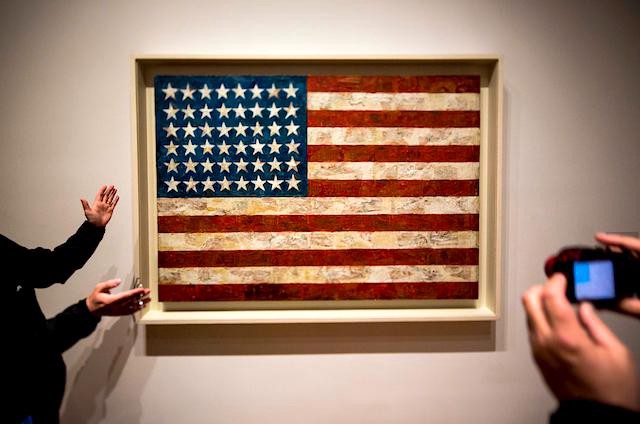Item In News + Other Item In News = Comedy Traffic Goldmine

This is a very interesting piece on how the New Yorker is thinking about digital and the future. Here is what seems to me like a very true thing: “Readers are more likely to read and finish long stories on their phones than on their computers.”
But then also I did a search on this article’s page for “Borowitz” and didn’t find anything?
The Life Cycle Of A Pop Song
by Julia Lipscomb
Conception Phase
The song is born in a basement, a warehouse, or among buskers on the street or subway station. The song may not be entirely finished yet.
Underground Phase
The song is played to a small crowd of 3–20 friends, mostly drunk, incoherent, and incapable of judging its quality.
Ambivalent Phase
You hear it in concert and no one cares. It’s not worth bragging to your friends, even if you secretly like the song.
Connected Phase
You hear the song and it’s so refined that it’s good. Your first thoughts are, “Is this real? Am I hearing this?” This is the great “aha” effect that every artistically mastered song aims to achieve on its audience. The listener can get this effect at any stage, but it usually comes before the listener becomes aware of the popularity level or corporate label attached to the band.
Indie Phase
You hear the song at a professional “indie” level, whether it’s on an indie soundtrack, on an indie station, at an indie music venue, or from an indie record label. The song is independent of capitalist gains and the artist maintains maximum control of production, but for how long is the question.
What now, Grimes?
Hipster Phase
This phase is when the song is still indie but with an added element of pretension. You may hear it in concert before everybody else does. However if you say, “I heard this before anyone else,” people may call you a hipster and a “hipster” is deemed bad, so please use the line with discretion.
Did you get turned away from that Ratking album release show on 14th Street the other day? No amount of “knowing the venue managers” could have gotten you into that one.
Mixtape Phase/Spotify playlist phase
Have you heard this? Of course you’ve heard this! But have you heard this in the order in which the fan deems it appropriate and juxtaposed to other tracks in a playlist to set a mood, vibe, atmosphere, or tone?
Top 40 Phase
This is when everyone with access to modern technology hears it before everyone else. The song makes about as much sense as the last sentence.
Sick of it yet?
Number 1 on Billboard charts Phase
You hear the song in every restaurant. You hear the song playing on the loudspeaker while passing Madison Square Garden. You are haunted by the image or feeling that is provoked by the song every day.
Previously: “Get Lucky.”
Restricted Phase
You can only hear it in an auditorium of 10,000 people. The musicians are untouchable golden gods. You will never meet them even if you wait an hour outside the backstage entrance and claim the lead singer is your nephew.
Macklemore used to play little tiny venues in Seattle, now he’s selling out auditoriums?
Shame Phase
You stop listening to the song. For good. Or at least for several months. Or years.
I know you listened to this high school. I know you would still listen to it (because you know Bright Eyes IS really good!), but would you admit that to your friends now?
Shamelessness Phase
Take the album out again for a good listen, wonder why you don’t listen to it more often. You relive old memories of five years ago. When the album is over, you file the CD back into the closet and don’t touch it again for years, maybe a decade.
Now please put it back in the vault.
Retrospective Phase — The song’s over a decade old. You find it in a record store and sigh.
You’d still buy it, wouldn’t you!
Karaoke Phase
The song may be cool again, but don’t get too obsessed over the lyrics. Sing it.
Julia Lipscomb is a grad student and writer living in Brooklyn. She’s obsessed with zines and listening to bands that none of her friends like.
New York City, April 9, 2014

★★★★ Someone found it irresistible to start jackhammering in the earliest daylight. Downtown, a woman in a light dress and broad-brimmed hat posed for a photograph in the bicycle lane, after pausing for a cyclist to go by. The sun backlit the clouds into fierce whiteness — white puffy cumulus clouds and clustered white shreds, as if a whole cloud had exploded or been shot out of the sky. A brick-scattered glow filled the six o’clock streets, and the wind had a gently autumnal bite.
Karl Ove Knausgaard, Part Three
With the latest volume of Karl Ove Knausgaard’s My Struggle appearing in English soon, a flurry of Karl Ove Knausgaard coverage is bound to accompany it. As someone who enjoyed the first two, I approve.
Jamie xx, "Sleep Sound"
This works either with or without visuals, but if you watch the video make sure to read the intro on the clip, which gives things an entirely different dimension. [Via]
Realism Lauded
“What separates Martin’s books from the pack is that his made-up world of Westeros feels more ‘real’ than other made-up worlds like Tolkien’s Middle Earth or Brooks’s Shannara. There’s very little magic in the series, and when something supernatural happens, everyone is freaked out and confused. The characters have sex (mostly sex that would be illegal today), get tortured, betray one another, and die incredibly easily and often for very little reason — just like real people involved in a medieval war would have. One of the first plot points is a child getting thrown off a ledge and crippled after he witnesses some nasty-ass incest; one major character gets killed on the toilet and shits all over the place as he dies. So the books are earthy, you might say. More importantly, anyone in Martin’s world who strives for nobility, honor, or any other trait lauded in traditional fantasy novels inevitably ends up impaled on a spike or crippled and humiliated by the amoral crooks who always come out on top. Like I said, this is more realistic than most epic fantasy.”
Asses At Rest Tend To Stay At Rest: Study
“[M]ost of us don’t tweet or post at all while we’re plopped in front of the tube. When we do, half the time we’re talking about something other than TV. And social media conversation is far weaker than traditional factors, like TV commercials for new shows or our sheer laziness in changing channels, in prompting us to tune into each season’s new offerings.”
Who's Looking Out For Jasper Johns?
by Brendan O’Connor

Two decades ago, Martin Lang paid £100,000 for what he thought was a painting by Marc Chagall — a reclining nude, dated 1909–10. Recently, at his son’s behest, Lang submitted the painting to the producers of the BBC art program “Fake or Fortune?” Unfortunately for Lang, “Fake or Fortune”’s analysis came up fake: it showed that the painting’s blues and greens used pigments only developed in the 1930s.
Upon this discovery, Lang was issued a writ by the Chagall Committee — based in Paris and headed by Chagall’s two granddaughters — which is the only body with the authority to declare the authenticity of a Chagall. Now that Lang’s painting has been shown to be a fake, what does the Chagall Committee want with it?
Well, they want to burn it.
If the committee finds a piece to have been forged it should, according to some magical and arcane and very, very French law, be burned in front of a magistrate. Italy and China also sometimes order the destruction of fakes. It’s rarer in America, although already this year work by Richard Prince was ordered destroyed — not because it was fake but because it was said to infringe on copyright.
But sometimes you can’t get your hands on your own fakes.

Jasper Johns is now 83 years old, and he lives in Sharon, Connecticut. At the end of January, he came back down to Manhattan to testify in federal court against Brian Ramnarine, a 60-year-old native of Guyana and the former owner of Long Island City’s Empire Bronze Art Foundry. Ramnarine is accused of wire fraud. He tried to sell a fake Jasper Johns sculpture that he made, for $11 million.
Johns’ first “Flag” painting was done in the mid-1950s, in a fertile period when he was involved with Robert Rauschenberg and they were working in studios down at the foot of the Brooklyn Bridge; that “Flag” is now owned by the Museum of Modern Art. “White Flag,” done in the late 50s, was sold to the Metropolitan Museum of Art for an undisclosed sum in the millions of dollars. “Three Flags” you have probably seen at the Whitney. You have probably not seen the one owned by Steve Cohen.
In 1960, Johns made a “Flag” painting using a material called “sculpt metal.” Sculpt metal, as described by Johns in his witness testimony, is a kind of a lacquer that has the consistency of toothpaste. “It can be spread with a knife or with your finger or it can be thinned with a solvent and brushed on some material,” he said. “When it dries it can be polished and it resembles metal.” That was when Johns was being helpful on the stand. (To defense lawyers, he was less so: Q. “Much of your work is valued in the millions of dollars?” A: “Is that a question?”)
Johns gave the sculpt-metal “Flag” to Rauschenberg; shortly thereafter he borrowed it back to use it to make a sculpture. Because he had done the piece using sculpt metal, Johns was able to take a mold of the surface of the painting. He poured plaster into the mold; he then removed the plaster and had a ‘positive’ of the surface of the painting, which he gave to a foundry. The foundry made four copies of that positive in bronze. One would be given to John F. Kennedy.

Two decades later, Johns had another mold made — this one a negative — by “a very fine mold maker,” a woman he said had been working on the restoration of the Statue of Liberty with her father.
(A positive mold — such as the one used to create the first four copies of the sculpt-metal painting — is pressed into the ground, creating a depression which is then filled with metal. A negative mold is one into which metal is poured directly. Now you know!)
Sometime around 1987, Johns brought that mold to the Polich Tallix foundry. They cast a “Flag” sculpture in silver and returned the mold to Johns. A few years later, sometime around 1990, Johns began to consider casting a “Flag” sculpture in gold.
Johns approached Brian Ramnarine with the idea — they had worked together before on “a number of projects,” Johns said. Johns lent the mold to Ramnarine, who made a wax cast — a kind of a test run — which he delivered to Johns and which Johns kept in his refrigerator. Ramnarine did not, however, return the mold.
Sometime in the early 90s, an art dealer came to Johns with a bronze copy of “Flag,” asking him to authenticate it. Johns refused and sent the man away, though not before crossing out a fake signature on the back of the sculpture.
At the trial, the prosecutor showed Johns this forged sculpture once again.
“Is this your sculpture?” he asked.
“Its source is mine, from my work,” said Johns. “But it’s not mine.”

The art dealer who visited Johns wrote him a series of “increasingly desperate” — Johns’ words — letters from 1994 to 1996. In 1995 he even sent Johns a portrait that he (or someone else) had done of the artist. Johns responded twice, denying to authenticate the sculpture both times. At one point he sent his longtime assistant James Meyer to retrieve the mold, but Meyer was unsuccessful.
The identity of this art dealer — now deceased — is unclear. Johns remembers him as a relative of Ramnarine’s but didn’t use his name in court. During the cross examination, however, one of the defense attorneys used the name “Mike Harpul” to refer to this individual. In its trial coverage the Associated Press declined to use a name, referring only to a “relative” of Ramnarine’s; the Wall Street Journal, however, does give this individual a name, albeit in a different form than that recorded in the court’s official transcript: “Sendupt Harpaul.”
In any event, after spending the previous half-decade denying this man’s — and, presumably, by proxy, Brian Ramnarine’s — requests to authenticate the bronze “Flag” sculpture, Johns got Ramnarine’s wax cast out of his fridge and took it to a woman named Paige Tooker, who used it to cast a “Flag” in white bronze.
At some point in the intervening years, Ramnarine forged a second “Flag” sculpture — a fact of which Johns only became aware after he was informed by the FBI in 2010. This sculpture was not only inscribed with a signature but also identified as an artist proof: “AP 1/1.”
Ramnarine (or someone else) also forged Johns’ signature on documents purporting to authenticate the sculptures. It’s possible that it was someone else because Ramnarine is illiterate.
Four days after Johns testified against him, Ramnarine changed his plea.

Brian Ramnarine faces up to 80 years in prison and as much as nearly a million dollars in fines. He has pleaded guilty to three counts of wire fraud, and it is up to the judge to decide whether he will serve his sentences for each concurrently or consecutively. The sentencing will take place May 30th at 10 a.m., if you are into that kind of thing.
But why is the penalty so steep? For one thing, wire fraud is a felony — and a federal offense at that — and Ramnarine copped to three counts of it. The feds had offered him a deal in 2012 but he declined. Whatever they offered him then is gone now. Moreover, Ramnarine was already under investigation for the first offense (the charges relating to Johns) when he committed the alleged fraud relevant to the second two counts.
It’s odd that Ramnarine turned down the deal offered to him in 2012 — after all, he took a deal in 2003, the first time he was staring down federal charges.
“He’s a tremendously mean person,” one former employee told the Queens Chronicle back in 2003, when Ramnarine was first busted selling fakes. “He has absolutely no shame.”
When he changed his plea on the 27th, Ramnarine tried to introduce a new character to the story.
“I met an art broker, Adam Stolpen, and he was trying to sell the American ‘Flag,’ and I said, ‘Fine,’” Ramnarine said.
The judge wasn’t having it.
But why would an art broker be interested in a forgery? Particularly when, in Johns’ case, there was so much legitimate work on the market already, and what’s more, quite a bit of stolen work, as Johns’ studio assistant James Meyer — the fellow that Johns had once sent to retrieve the forgery — was accused of sneaking at least 22 works straight out of the studio.
“Profit margin on fakes and stolen art means it comes in handy when business is tough,” Paul Hendry told me over Skype. “Turbo Paul,” as he is known, is the proprietor of the blog Art Hostage and claims to be a former trafficker of stolen art. The sale of forgeries, fakes, and unauthorized copies, Hendry said, “can be a welcome bonus because those deals are mostly cash oriented, off the books.” In other words, fakes cost little, and sell quick.
“Temptation, human nature of something for nothing depicts why the allure of a quick buck overrides sense,” he said.
And what’s an artist to do? Johns’ art dealer, Leo Castelli, died in 1999, and he hasn’t had a guiding relationship like that since, though he works in a limited capacity with Matthew Marks Gallery. So when Johns was first approached by Harpul, or Harpaul, or whoever this art dealer was with the forged “Flag” sculpture, he contacted the Art Dealers Association in New York.
“They were not extremely helpful,” he said.
Brendan O’Connor is a reporter in New York. Photo by Parker Miles Blohm.
What's Next For New York?
“My theory is that we are primed for the pendulum to swing back to Manhattan — we are approximately 2 years away from a rash of trend stories declaring that ‘Manhattan Is the New Brooklyn,’ as people begin to realize that it’s actually cheaper now to live in the East Village or Washington Heights or the Upper East Side than it is to live in fucking Williamsburg or Fort Greene or even fucking Bed-Stuy or Crown Heights, at this point, fuck everything.”
